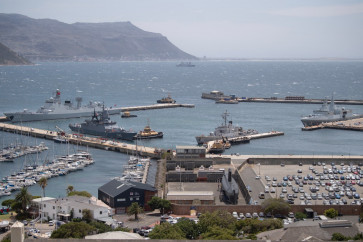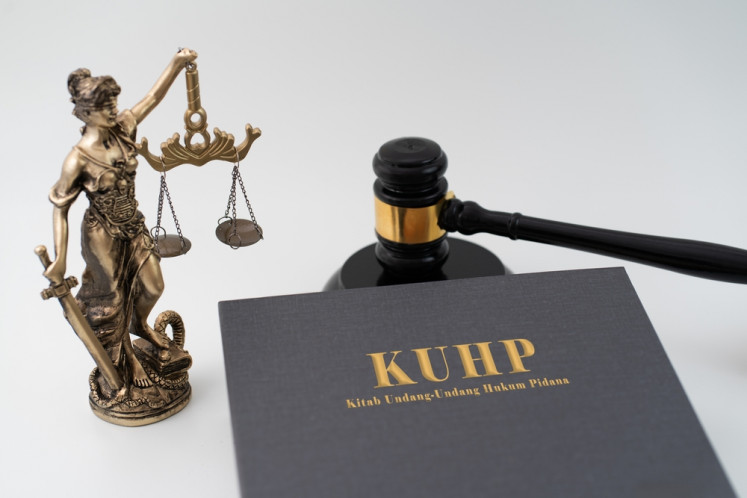Popular Reads
Top Results
Can't find what you're looking for?
View all search resultsPopular Reads
Top Results
Can't find what you're looking for?
View all search resultsA more interventionist ASEAN is needed
A fresh arms conflict between Cambodia and Thailand over the last several days looks like it was a time bomb that erupted suddenly
Change text size
Gift Premium Articles
to Anyone
A
fresh arms conflict between Cambodia and Thailand over the last several days looks like it was a time bomb that erupted suddenly. It is really the most serious dispute between ASEAN members since its establishment in 1967. The conflict has not only taken 14 lives, but has also deteriorated ASEAN’s prospect of becoming an effective institution. The long-standing claim by ASEAN leaders that Southeast Asia is one of the most stable regions has been seriously challenged by the conflict.
Indonesia, which chairs the ASEAN, took an active stance by offering unarmed military observers to the Cambodia-Thailand border and arranging and hosting a bilateral negotiation. However, Indonesia’s good intention to help resolve the dispute faces a considerable constraint, given that both Cambodia and Thailand have taken firm positions on the issue.
Cambodia has attempted to multilateralize the dispute because it has an advantage as a result of the international recognition of the temple. On the other hand, Thailand has tried to make the conflict a bilateral matter, thereby limiting Indonesia and ASEAN’s involvement in the peace process. Both countries’ stances are inspired and complicated by domestic politics.
Anticipating the national election next year, the Cambodian People’s Party (CPP) reassured the people in early 2010 that Hun Sen would be the only candidate for prime minister, meaning that he would continue his 26-year-long rule. Thus, it makes sense that Hun Sen would do anything to touch the hearts and minds of Cambodians.
This is especially true, given that his government’s economic performance was negatively impacted by the global economic downturn that suspended the country’s rapid growth from 10 percent annually for 10 years to only 5 percent in 2009 and 4.5 percent in 2010.
At the same time, Thailand’s continuing political crisis, which began in 2006, has created domestic factions, each with its own political agenda. After almost two years of silence, the Yellow Shirts, also known as the People’s Alliance for Democracy (PAD), took the stage as a formidable pressure group.
During its rise, the group surprisingly distanced itself from Prime Minister Abhisit Vejjajiva and the Democratic Party, its former allies. The PAD demanded the revocation of the 2000 MOU on border demarcation signed between Thailand and Cambodia.
However, it is unclear why the group’s provocative demonstrations on the Preah Vihear issue only occurred from the end of last year after the government scheduled the election this year. Why did they not take place two or three years ago or in 2000 immediately after the signing of the MOU?
Domestic dynamics in both countries were a contributor to the failure of the Bogor meeting earlier this month. The meeting itself in fact was historic because it was the first time ASEAN members discussed inter-state disputes in another ASEAN country. Nevertheless, there was no enough domestic political legitimacy for the meeting to be a success. Thai Foreign Minister Kasit Piromya, for example, had a difficult time dealing with the Army leaders and the Defense Ministry, which were principally reluctant toward the meeting.
Being nationalistic and confrontational is currently beneficial for both Cambodian and Thai politicians and also military commanders, but it hampers the prospect of resolving the conflict. More importantly, it threatens ASEAN’s effectiveness, which has been promoted by ASEAN leaders. ASEAN’s claim of centrality in Pacific regionalism, primarily through the East Asia Summit (EAS), will also become less relevant if it is unable to mitigate conflicts among its members.
This year is a good time for ASEAN because it is chaired by the economically biggest and democratically most advanced country that has leverage to urge conflicting parties to sit at the negotiation table.
Nonetheless, the chairmanship will be resumed next year by Cambodia, a party in the conflict, then by the wealthy, but politically less powerful Brunei Darussalam in 2013. Thus, the big hope comes to this year. If ASEAN can find a peaceful and sustainable solution, it will represent a significant step toward advancing regionalism in Southeast Asia.
To avoid a stalemate in the negotiation process, the more interventionist ASEAN, and particularly Indonesia, is needed. I believe that Thailand, the longstanding backbone of ASEAN’s “flexible engagement,” might move toward a regional mechanism. In this sense, Abhisit’s leadership, not the Army or the Yellows, should confidently lead the way toward negotiation.
Further, Cambodia also must show intentions to create mutual trust and build confidence, for example, by releasing detained Yellow Shirt activists without conditionalities and avoiding provocative statements that often threaten peaceful solutions.
To Indonesia, there are some points that can be pursued. The first involves persuading both parties to agree on a timeframe for the negotiation, which is important to ensuring an effective negotiation. The need to arrange the agreed time limit is guaranteed under Article 23 of the ASEAN Charter. We should not hope for a quick settlement, but at least both Cambodia and Thailand and other ASEAN members know where they are.
The second involves considering the establishment of the ASEAN High Council under the Treaty of Amity and Cooperation (TAC) that offers an appropriate means of settlement to parties in disputes. The third involves maintaining continuity in the negotiation process.
Indonesia can urge the ASEAN Troika to participate in mediating the process. If there is concern that the Troika cannot be objective because of Cambodia’s conflict of interest, Indonesia might suggest two third parties that could act neutrally, such as Singapore and the Philippines.
Although the conflict might not be resolved in the short run, Indonesia should play a role in establishing a regional mechanism that is reliable and respected by both Cambodia and Thailand, as well as the international community. Applauding the ASEAN Summit this May, Indonesia should not be reluctant to propose talks regarding the Cambodia-Thai dispute because discussing that issue is better than ignoring it.
The Cambodia-Thai conflict is not a new interstate conflict in ASEAN. Relations among ASEAN members have been and will be still contentious in the short to medium run. However, ASEAN now lives in a more complex era, which is actually already anticipated by numerous regional instruments.
In this sense, ASEAN members should embrace regional institutions they have to find resolutions to interstate conflicts. For example, if a war breaks out between Indonesia and Malaysia over Ambalat Sea disputes, although I hope it does not happen, both countries must be prepared to permit ASEAN intervention and prioritize inviting ASEAN to establish a regional mechanism. It is a way that we must believe in, if ASEAN countries truly want to become a credible community.
The writer is a student at the School of Advanced International Studies (SAIS), Johns Hopkins University, Washington D.C.










